Data Analysis: Frequencies, Correlation, and Regression
VerifiedAdded on 2023/04/21
|6
|739
|441
AI Summary
This document provides an analysis of data collected through a questionnaire. It covers frequencies distribution, correlation, and regression analysis. The main focus is on the relationship between network development and market supply.
Contribute Materials
Your contribution can guide someone’s learning journey. Share your
documents today.
1 out of 6

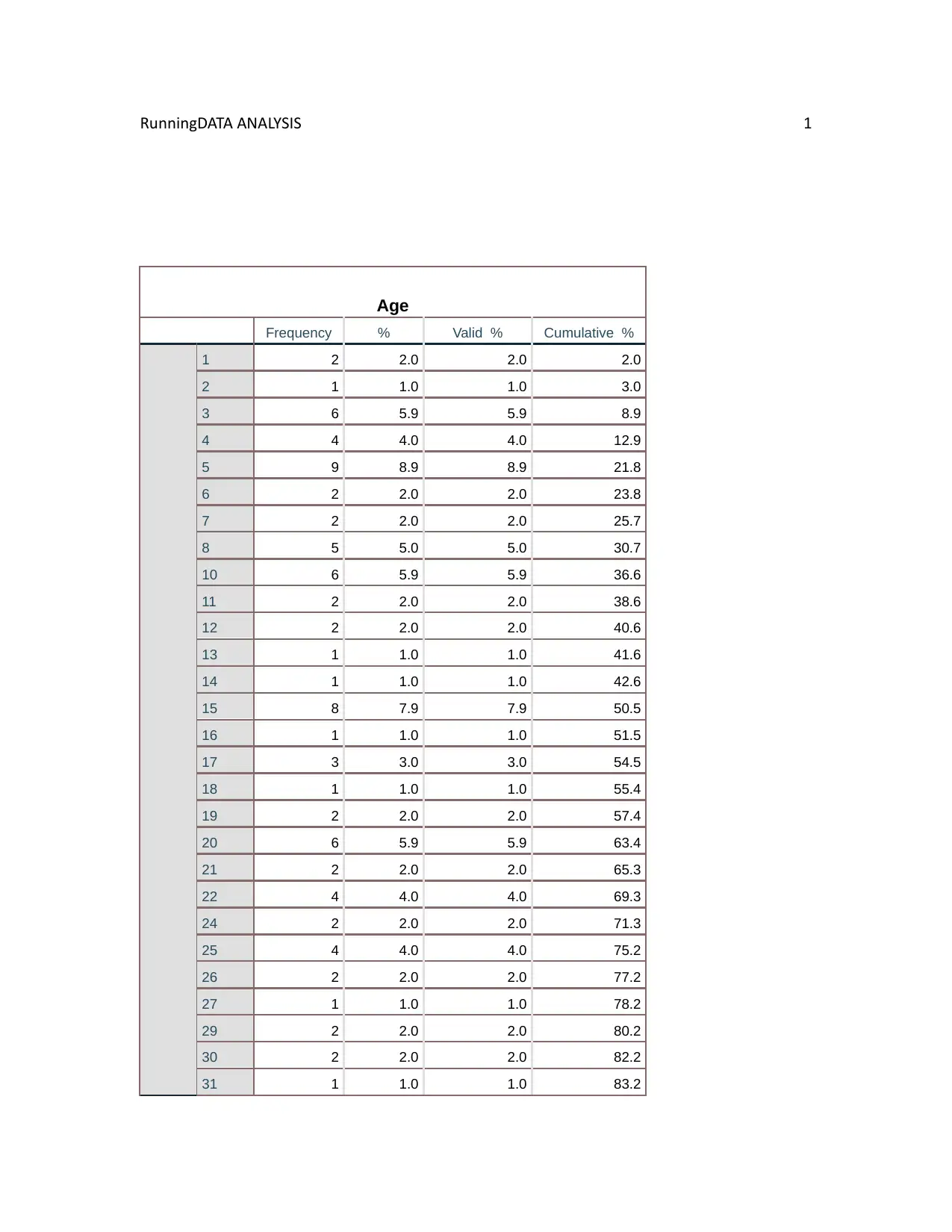
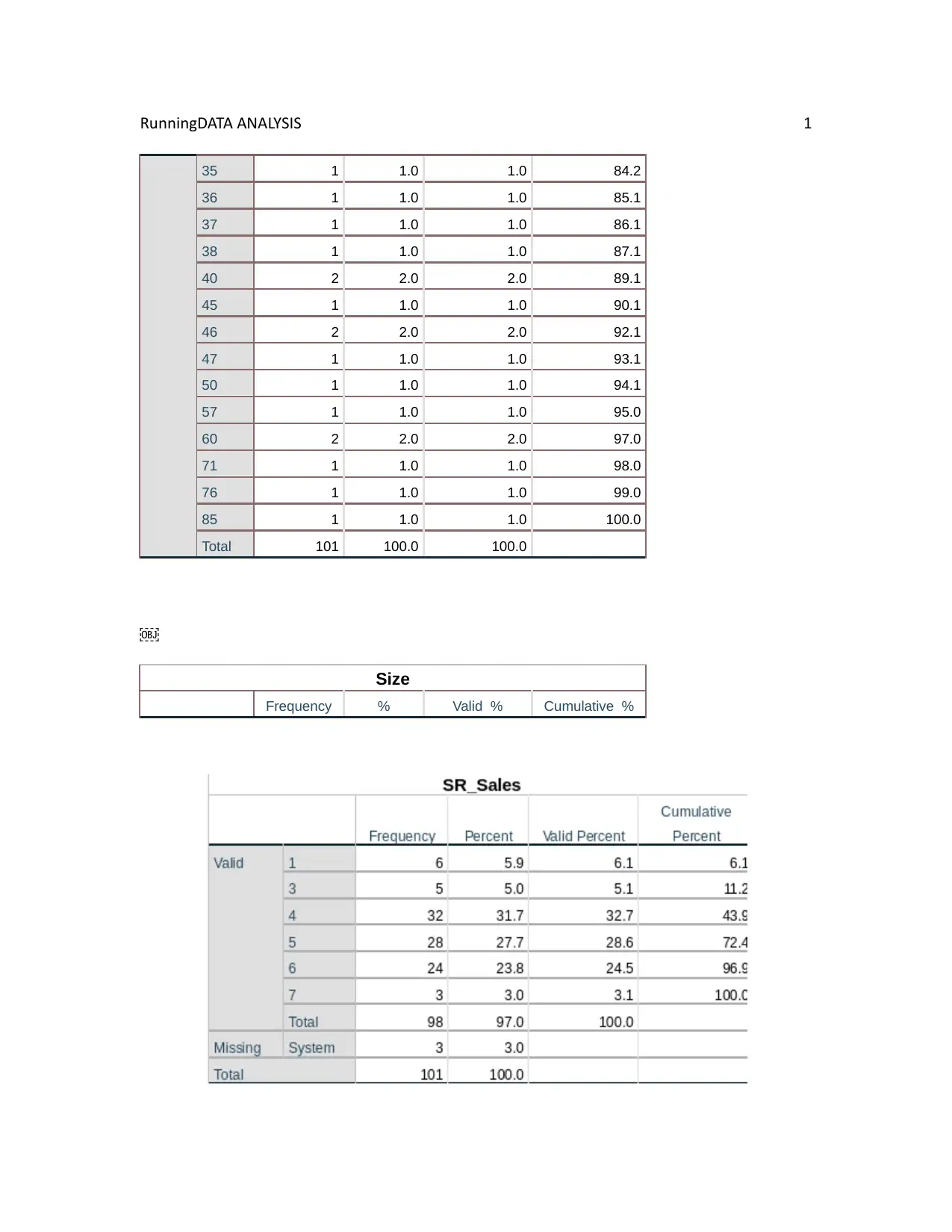
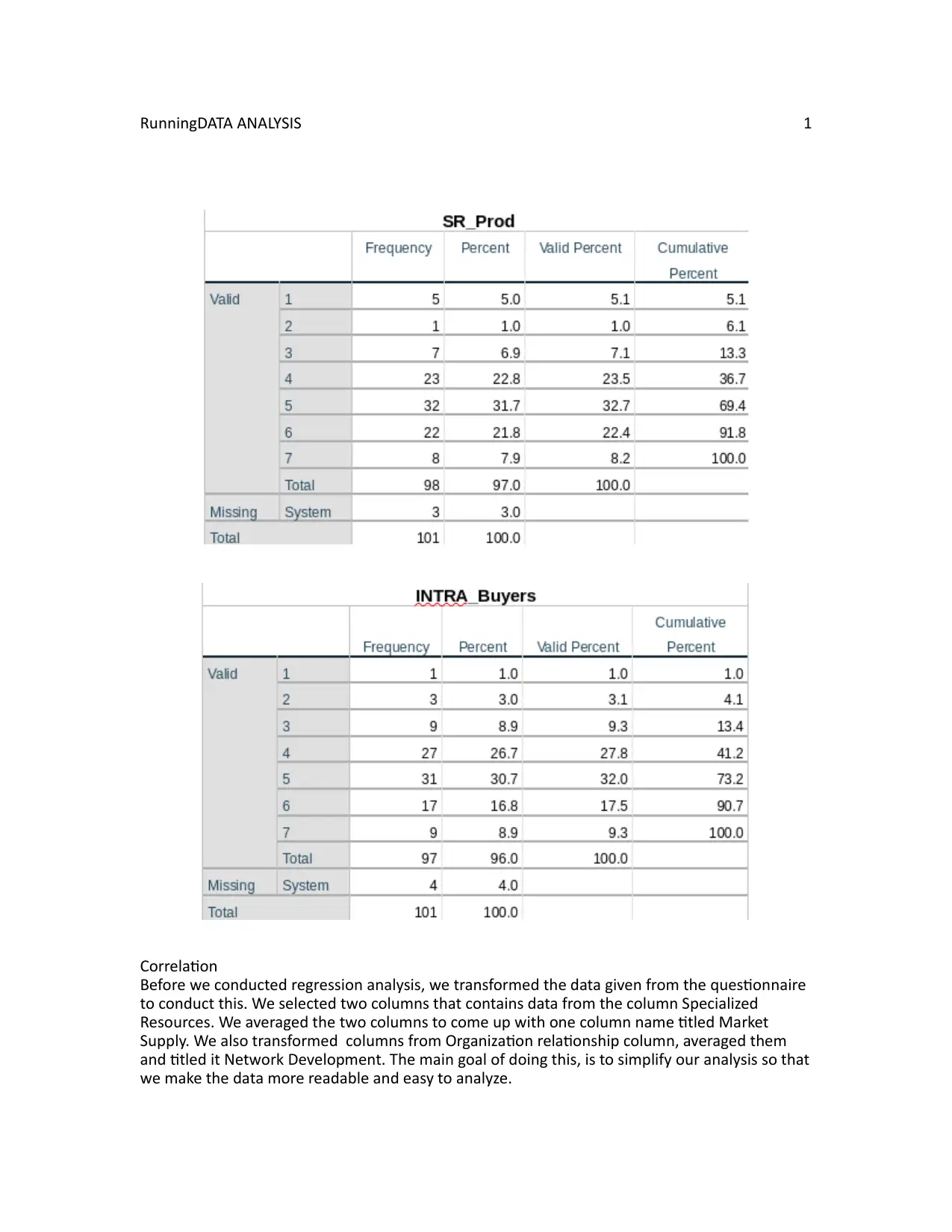
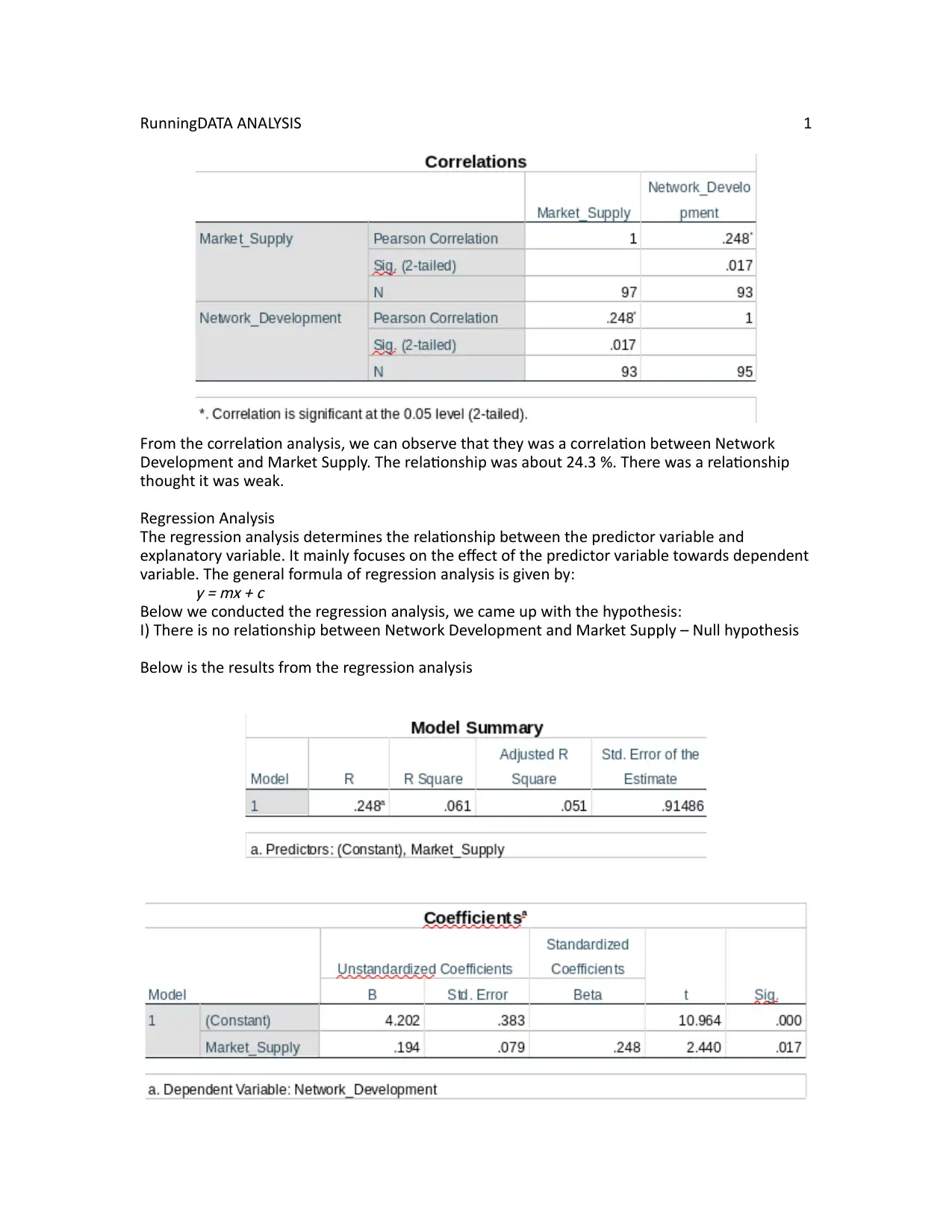
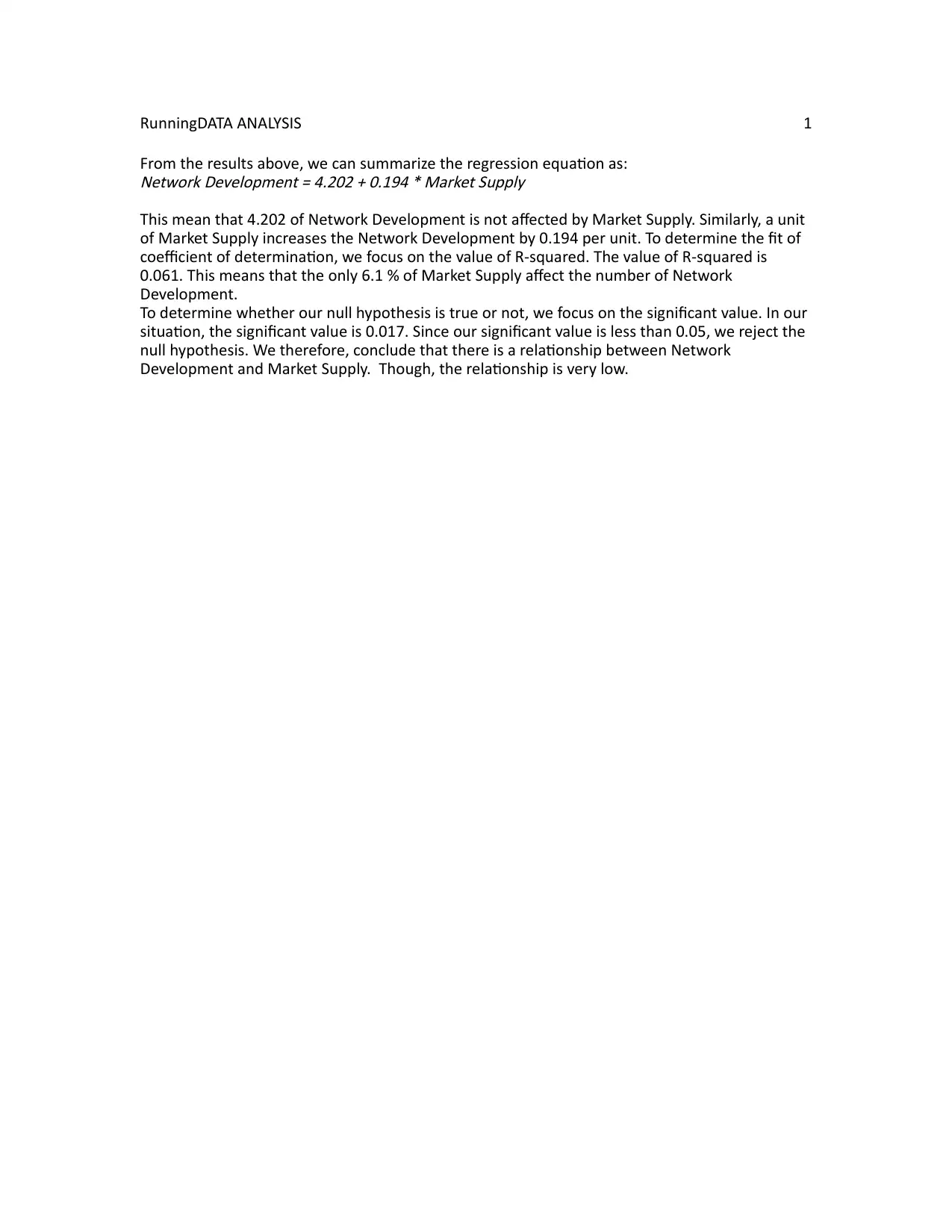





![[object Object]](/_next/static/media/star-bottom.7253800d.svg)